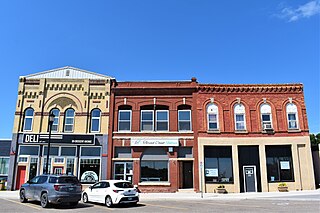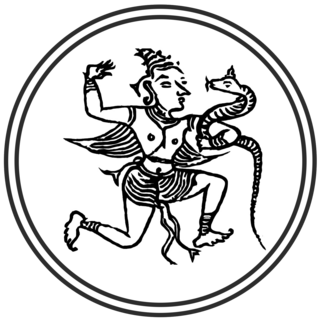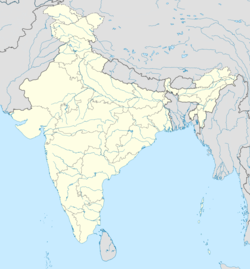
Rocky Mount is a town in and the county seat of Franklin County, Virginia, United States. The town is part of the Roanoke Metropolitan Statistical Area, and had a population of 4,903 as of the 2020 census. It is located in the Roanoke Region of Virginia.

Troyan is a town remembering the name of Roman Emperor Trajan, in Lovech Province in central Bulgaria. It is the administrative centre of the homonymous Troyan Municipality. The town is about 162 kilometres away from the country capital Sofia. The river of Beli Osam passes through the heart of the town. The 2021 Census indicates that the population of the Trojan was 18,449 inhabitants. The ethnic distribution of the inhabitants is ethnic Bulgarians (87.29%), with minorities being Roma (1.23%) and Turks (1.03%). Donka Mihaylova of Bulgarian Socialist Party has been the town's mayor since 2011.

Souris is an unincorporated urban community in the Municipality of Souris-Glenwood within the Canadian province of Manitoba that held town status prior to the Manitoba municipal amalgamations on January 1, 2015. It is located within the municipality at the confluence of Plum Creek and Souris River, from which it takes its name. Before 1882, the town was called Plum Creek.

Bhoja was King of Malwa from 1010 until his death in 1055. Bhoja fought wars with nearly all his neighbours in attempts to extend his kingdom, with varying degrees of success. At its zenith, his empire extended from Chittor in the north to upper Konkan in the south, and from the Sabarmati River in the west to Vidisha in the east.

The American Bottom is the flood plain of the Mississippi River in the Metro East region of Southern Illinois, extending from Alton, Illinois, south to the Kaskaskia River. It is also sometimes called "American Bottoms". The area is about 175 square miles (450 km2), mostly protected from flooding in the 21st century by a levee and drainage canal system. Immediately across the river from St. Louis, Missouri, are industrial and urban areas, but nearby marshland, swamps, and the Horseshoe Lake are reminders of the Bottoms' riparian nature.

Fort Snelling State Park is a state park of the U.S. state of Minnesota, at the confluence of the Mississippi and Minnesota rivers. For many centuries, the area of the modern park has been of importance to the Mdewakanton Dakota people who consider it the center of the Earth. The state park, which opened in 1962, is named for the historic Fort Snelling, which dates from 1820. The fort structure is maintained and operated by the Minnesota Historical Society. The bulk of the state park preserves the bottomland forest, rivers, and backwater lakes below the river bluffs. Both the state and historic fort structure are part of the Mississippi National River and Recreation Area, a National Park Service site.

The Rivanna River is a 42.1-mile-long (67.8 km) tributary of the James River in central Virginia in the United States. The Rivanna's tributaries originate in the Blue Ridge Mountains; via the James River, it is part of the watershed of Chesapeake Bay.

The Harsola copper plates are a set of two 949 CE Indian inscriptions that record the grants of two villages to a Nagar Brahmin father-son duo. The grants were issued by the Paramara king Siyaka II. The copper plates were discovered in Harsol in present-day Gujarat state.
Betma is a town and a nagar panchayat in Indore district in the state of Madhya Pradesh, India.
Dharampuri is a town and headquarters of a tehsil in Dhar district in the state of Madhya Pradesh, India. It is situated on banks of river Narmada. It is a place of some historical and archaeological interest.

Gravatá is a city in the state of Pernambuco, Brazil, located about 75 km (47 mi) from the state's capital Recife. The population of Gravatá in 2022 was 86.516 inhabitants, according with IBGE.

Bhojpur is a town of historical and religious importance in Raisen District of Madhya Pradesh, India.

The House of Paramara was a prominent Indian Rajput dynasty that ruled over the Kingdom of Malwa, the Garhwal Kingdom, and many other kingdoms, princely states and feudal estates in North India. They belonged to the Parmara clan of the Rajputs.

Panch Prayag is an expression in Hindu religious ethos, specifically used to connote the five sacred river confluences in the Garhwal Himalayas in the state of Uttarakhand, India. The five prayags - prayaga meaning "place of confluence of rivers" in Sanskrit - also termed as "Prayag pentad" are Vishnuprayag, Nandaprayag, Karnaprayag, Rudraprayag and Devprayag, in the descending flow sequence of their occurrence.

Sankheda furniture is colourful teak wood furniture of Gujarat, India, treated with lacquer and painted in traditional bright shades of maroon and gold. It is made in Sankheda village and hence its name. The village is located about 45 kilometres (28 mi) from Vadodara.

Raghunathji Temple in Devprayag, a pilgrimage town in Tehri Garhwal district in Himalayas in the North Indian state of Uttarakhand, is dedicated to Vishnu. It is located 73 km from Rishikesh on the Rishikesh–Badrinath highway. Constructed in the Deula style, the temple is glorified in the Nalayira Divya Prabandham, the early medieval Tamil canon of the Alvar saints from the 6th–9th centuries CE. It is one of the 108 Divyadesam dedicated to Vishnu, who is worshipped as Raghunathji (Rama) and his consort Lakshmi as Sita.
Siyaka, also known as Harsha, was the king of Malwa, who ruled in west-central India. He appears to have been the first independent ruler of the Paramara dynasty.
Munja, also known as Vakpati II, was an Indian ruler from the Paramara dynasty, who ruled the Kingdom of Malwa. He is known for consolidating the Malwa kingdom, for patronising poets and scholars and for achieving the military success against almost all of the neighbouring kingdoms.
Jayavarman, also known as Ajayavarman, was an Indian king from the Paramara dynasty, who ruled in the Malwa region of central India. He appears to have recaptured the Paramara capital Dhara after a Chaulukya occupation of the city. Sometime later, an usurper named Ballala became the control of the city, and Jayavarman appears to have moved to a newly created principality in the Bhopal area.
Bhoja was an Indian king from the Paramara dynasty, whose kingdom was centered around the Malwa region in present-day Madhya Pradesh. By 2003, 12 inscriptions dated to Bhoja's region had been discovered at Banswara, Betma, Bhojpur, Depalpur, Dhar, Kalwan, Mahaudi, Kokapur, Piploda, Tilakwada and Ujjain.
















